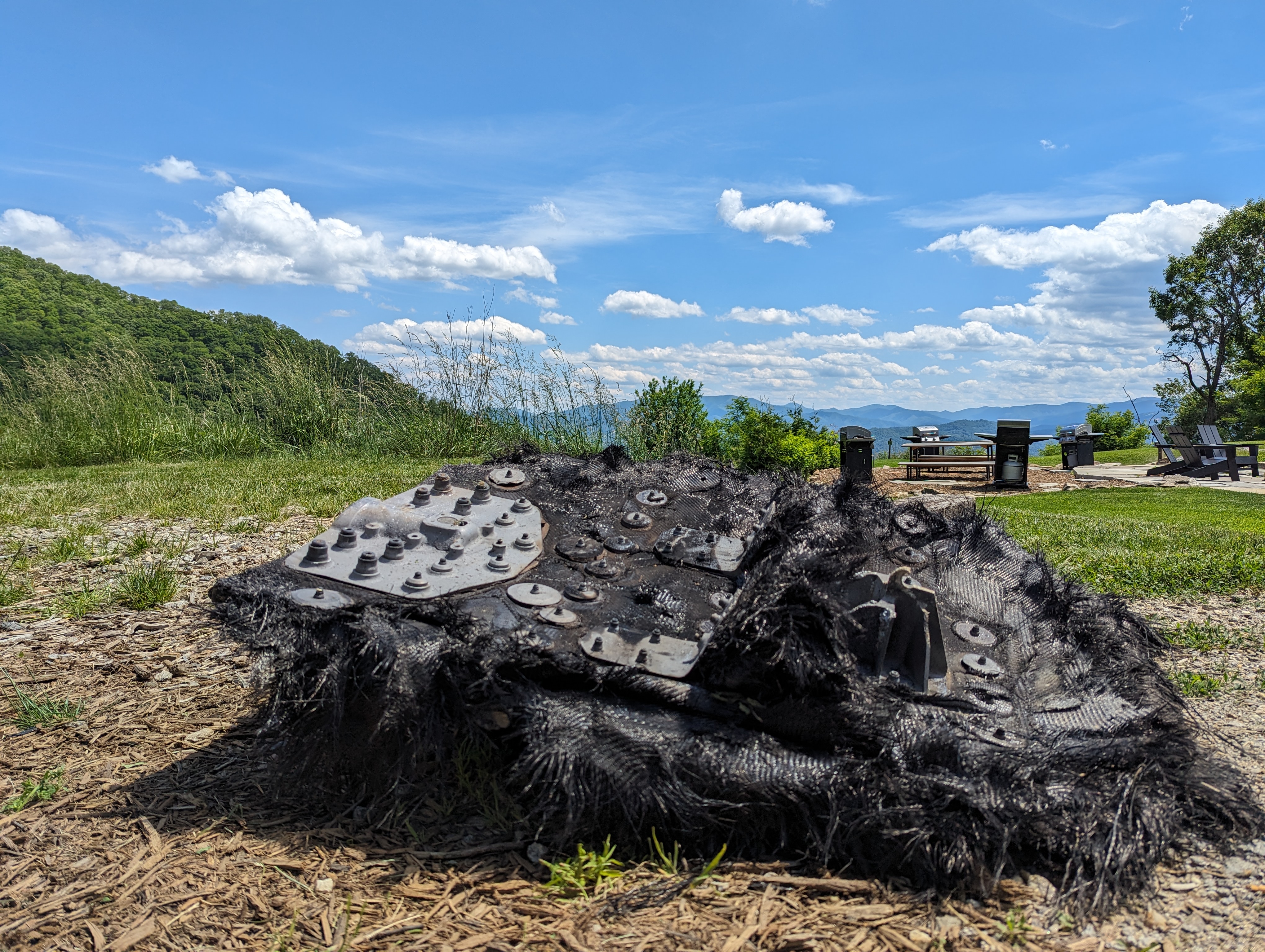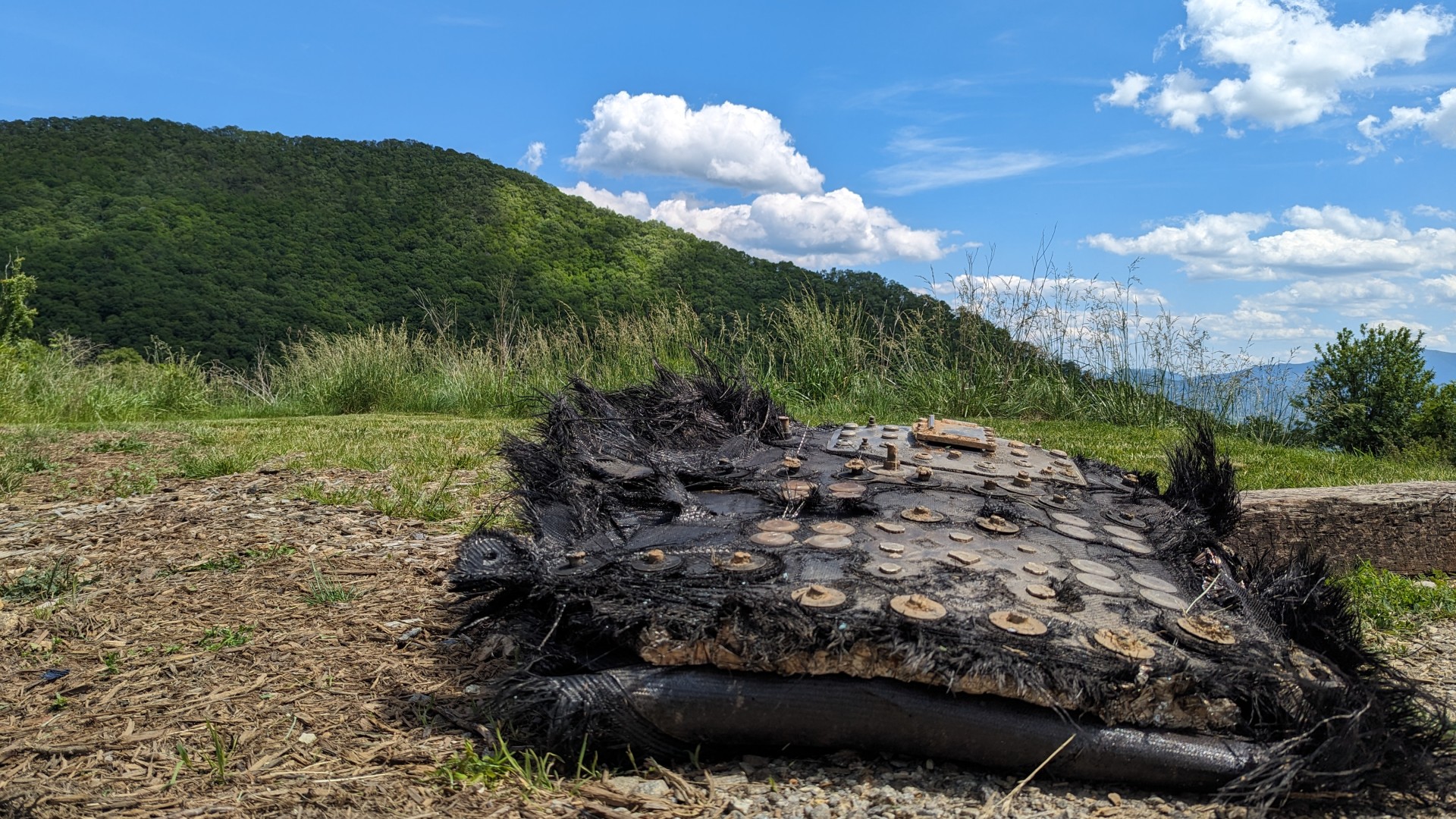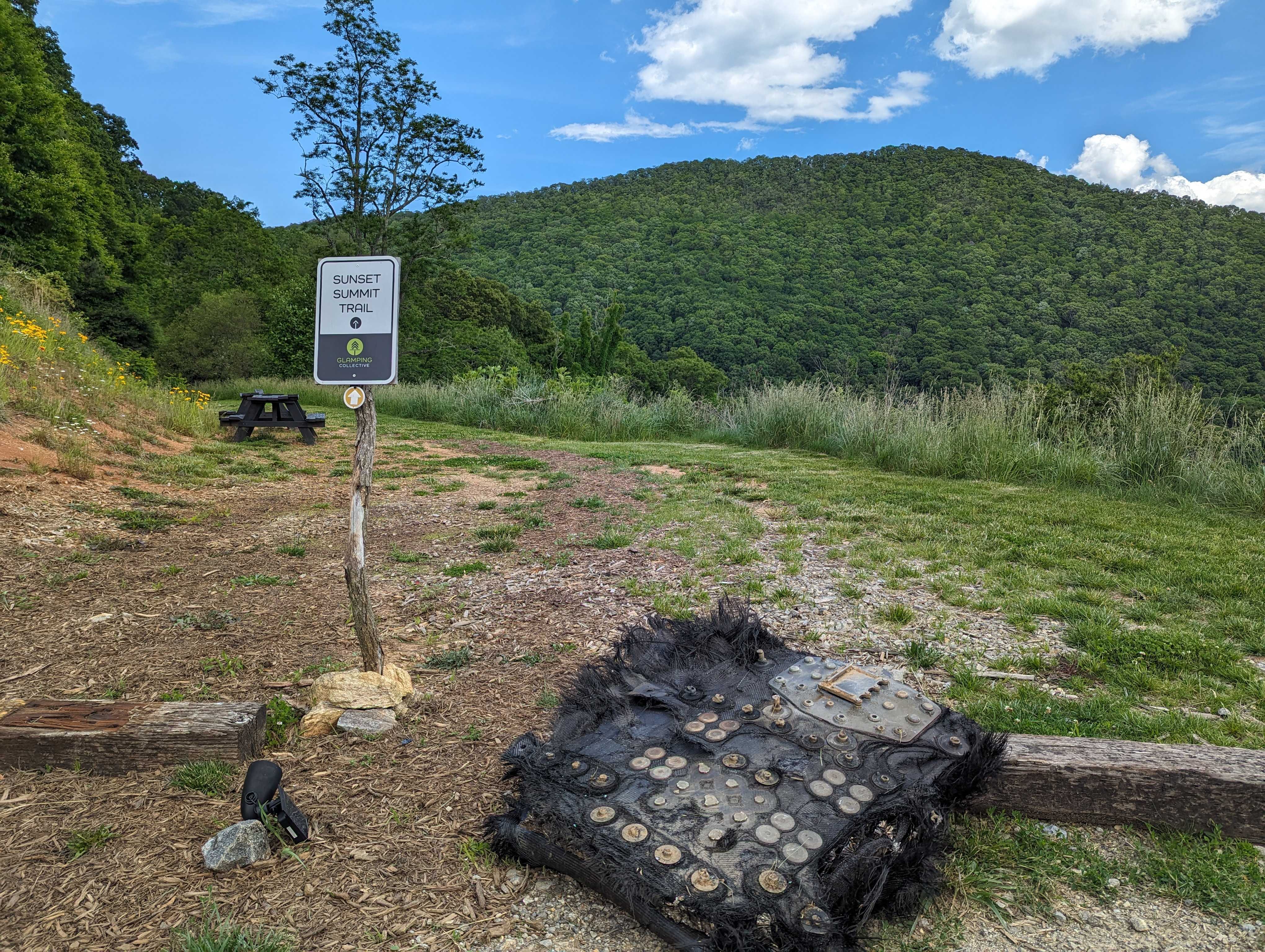Space debris from a SpaceX Dragon capsule crashed in the North Carolina mountains. I had to go see it (video)
"It was just wild. It was crazy-looking. I really didn't know what to think."
ASHEVILLE, North Carolina — Spaceflight doesn't typically come to mind when one thinks of North Carolina's serene, verdant mountains.
It's true that, in the early 1960s, NASA built the (now-defunct) Rosman Satellite Tracking and Data Acquisition Facility among the rolling hills of Appalachia to track Soviet satellites and relay communications for the Gemini and Apollo programs. And, of course, there are a few pockets of dark skies above Western North Carolina that allow for decent satellite spotting and skywatching.
But when it comes to the contemporary private spaceflight boom, these lush mountains are about as far removed as one can get from the bustling spaceports of Florida's Space Coast. That's why it was such a shock to discover a large chunk of space debris had been identified near Canton, NC — just outside of the city of Asheville, where I live. I had to go see it for myself.
On May 22, groundskeeper Justin Clontz and his father were performing maintenance on a trail at the scenic Glamping Collective, a 160-acre luxury camping property offering private dome-style cabins on a mountaintop with panoramic views of the surrounding Pisgah and Cherokee National Forests.
Coming around a bend in the trail that day, Clontz and his father stumbled upon an odd piece of junk lying on the ground, not far from the path at all. Roughly 3 feet by 3 feet (1 meter by 1 meter), the debris consisted of shredded carbon fiber composite and scorched metal, with exposed metal bolts and plates poking out of it. It had a faint smell, similar to ozone.
"It landed directly in the middle of the trail," Clontz told Space.com. "It was just wild. It was crazy-looking. I really didn't know what to think."
There was no damage to surrounding trees or grass, Clontz said. It was as if someone had placed the debris right where it could be found, on a peaceful trail through the Pisgah National Forest.
Breaking space news, the latest updates on rocket launches, skywatching events and more!
Clontz and other employees of the Glamping Collective initially thought the debris might be from a military aircraft. "I didn't know if we should be touching it," Clontz added.
Soon, scientists would weigh in.

As it turned out, the piece of debris likely came from the reentry of the SpaceX Crew-7 mission to the International Space Station, which returned to Earth on March 12, 2024, according to astrophysicist Jonathan McDowell of the Harvard–Smithsonian Center for Astrophysics. "This definitely looks consistent with being a bit of the Crew-7 Dragon's trunk which reentered on a path right over this location on Tuesday," McDowell wrote on X after news of the debris began circulating.
The astrophysicist also posted a map tracking the reentry path of the piece of Crew-7's trunk suspected to be responsible for the debris, which shows the spacecraft hardware passing directly over Canton, N.C. — right where Clontz found the specimen (and, unsettlingly, also almost directly over my house).
Here is the reentry path indeed going just west of Asheville NC (direction of flight was to the NE) pic.twitter.com/5niV87xh51May 24, 2024
The "trunk," as SpaceX refers to it, is the unpressurized tail section of the company's Dragon spacecraft, what other aerospace manufacturers would call a service module. This section carries cargo or small satellites, is fitted with solar panels that power Dragon when the vessel is in flight or docked to the ISS, and has fins for aerodynamic control during emergency aborts.
While Dragon capsules make their way back to Earth safely in controlled descents that are ultimately slowed by parachutes, the spacecraft's "trunk remains attached to Dragon until shortly before reentry into Earth's atmosphere," SpaceX writes on its website, after which it is jettisoned.
Further, it appears that, not only can these trunks remain in orbit for weeks longer than their host capsules, but large pieces of them can also remain intact after their fiery reentries into Earth's atmosphere.
"The discovery of SpaceX Dragon trunk debris from the Crew-7 mission in North Carolina, following debris from the Ax-3 trunk in Saskatchewan and from the Crew-1 trunk in Australia, makes it clear that the materials from the trunk regularly survive reentry in large chunks," McDowell wrote on X in May in reference to two other similar-looking pieces of debris found in Saskatchewan, Canada in May 2024 and in the Australian outback in August 2022.
SpaceX ultimately sent a team to investigate the Australian debris fall, a senior director of SpaceX's human spaceflight program said following that event.
But SpaceX has not yet reached out to the Glamping Collective about the purported debris, a manager at the site told Space.com.
Despite how worrying these discoveries can seem, there's no need to panic. According to the Aerospace Corporation, the chances of being struck and hurt by falling space debris are less than a one in one trillion, far less than the risk of being struck by lightning or even being bitten by a shark.
Clontz recognizes how rare the discovery is, and said finding the debris doesn't make him worry about any other pieces of space junk falling near him. "I have peeked up in the sky a few times today," he said, laughing. "But it doesn't scare me. I mean, how many planes fly over every day? How many satellites are up there in orbit?"
The Glamping Collective plans to build a display case for the debris along the trail where it was found.

Brett is curious about emerging aerospace technologies, alternative launch concepts, military space developments and uncrewed aircraft systems. Brett's work has appeared on Scientific American, The War Zone, Popular Science, the History Channel, Science Discovery and more. Brett has degrees from Clemson University and the University of North Carolina at Charlotte. In his free time, Brett enjoys skywatching throughout the dark skies of the Appalachian mountains.




